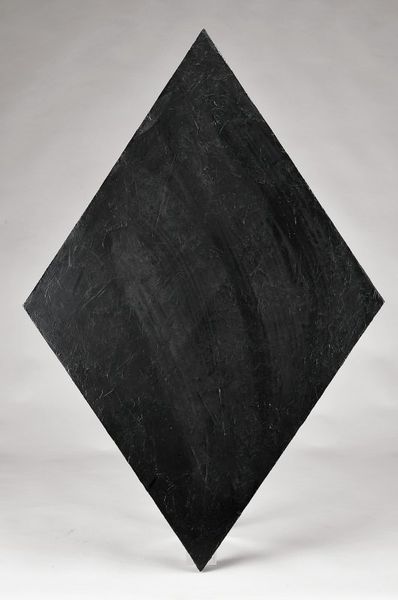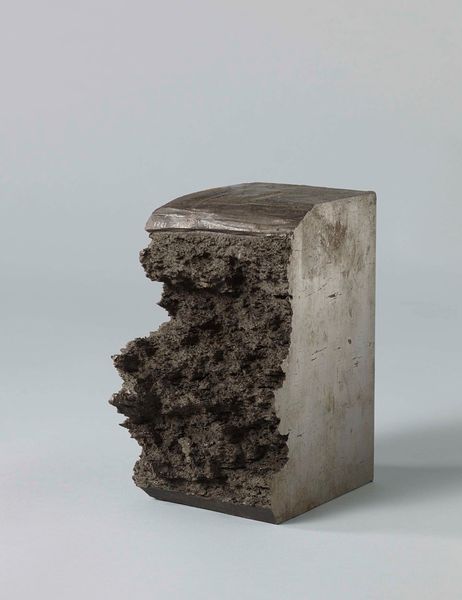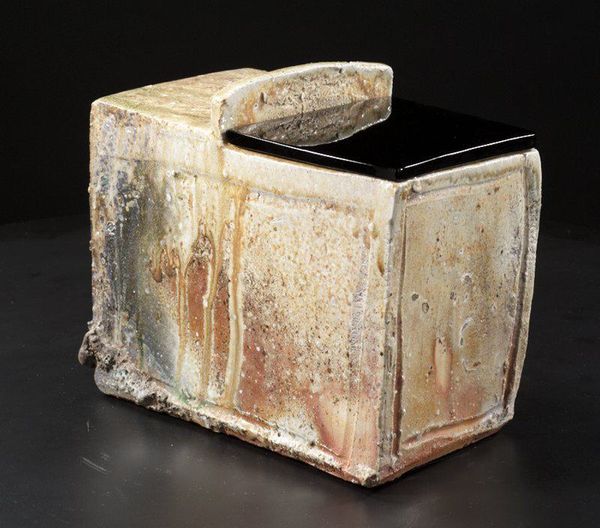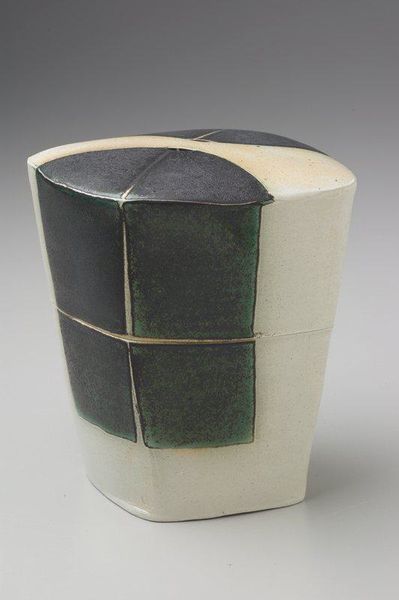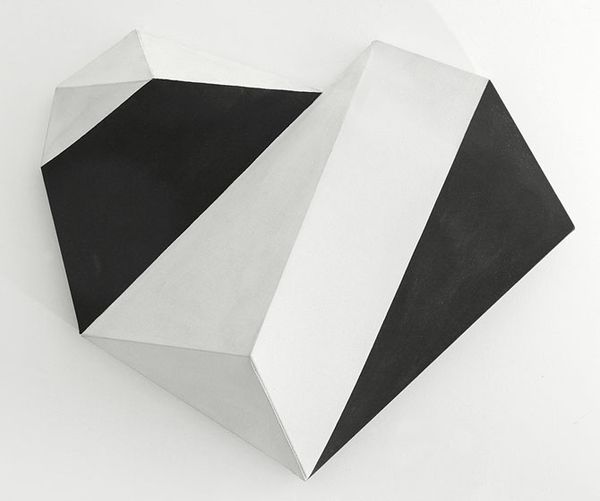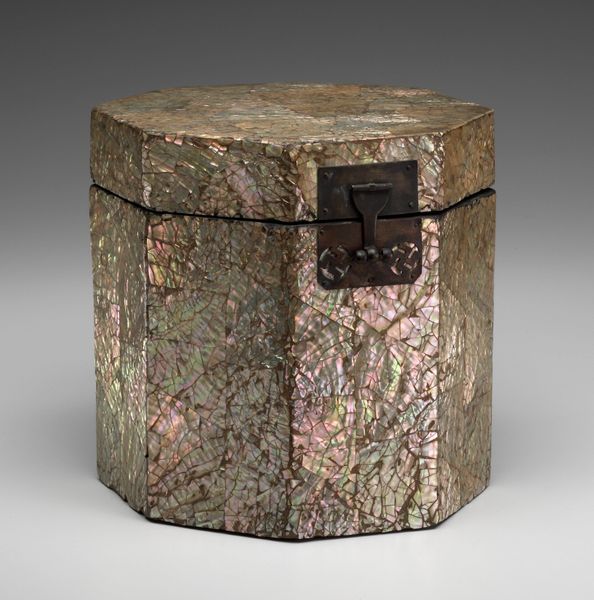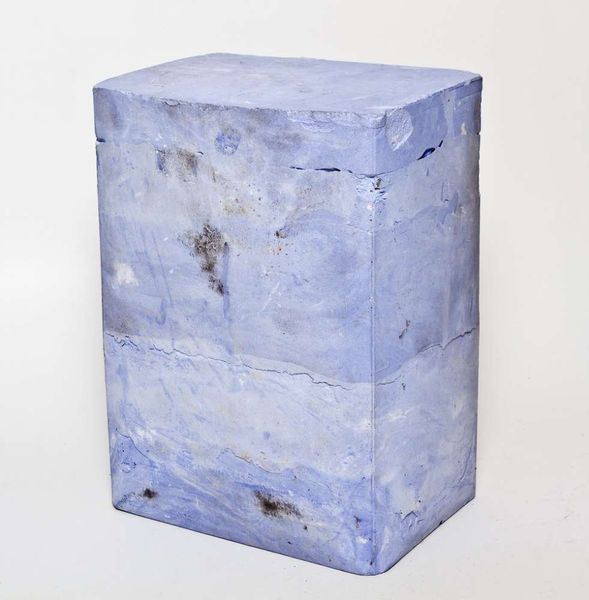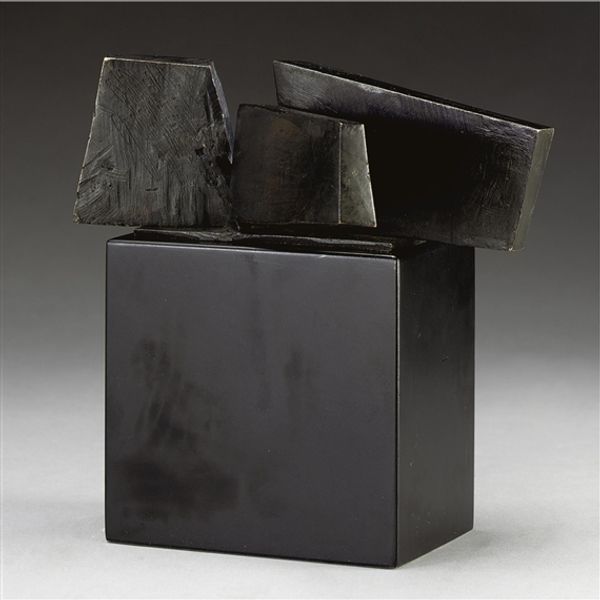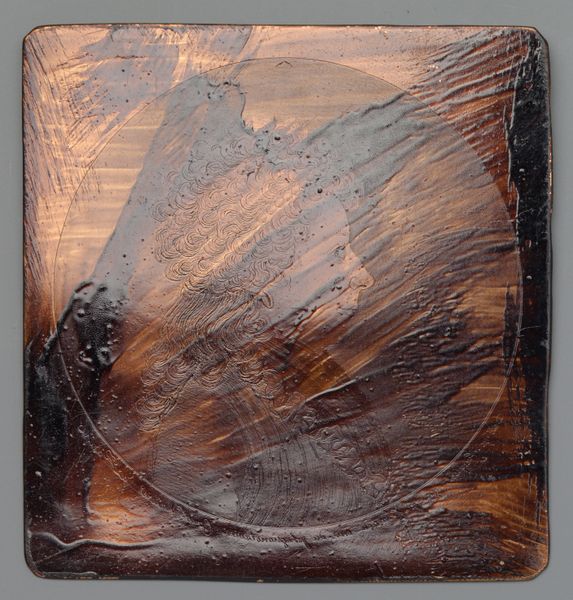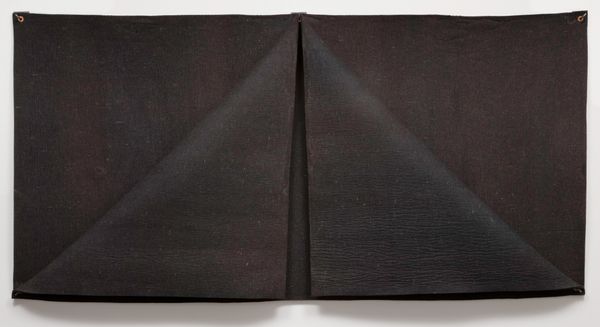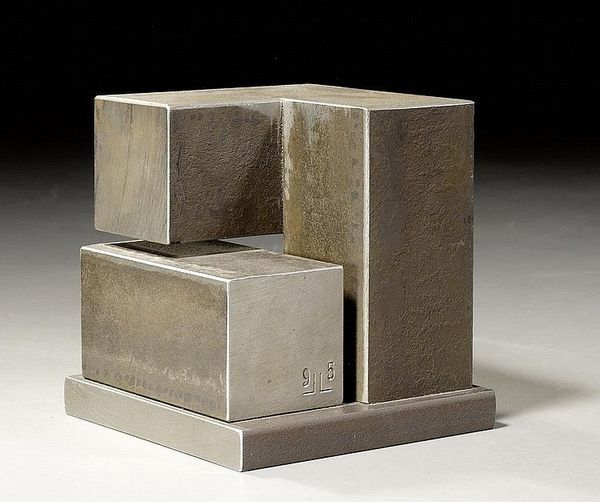
Hoed van zwart glanzend papier over kartonnen kern met wasdoek voering, met rechte bol en smalle, rechte rand die aan één kant is opgeslagen, zgn. hoedje van papier c. 1830 - 1832
0:00
0:00
mixed-media, readymade, paper, sculpture
#
mixed-media
#
sculpture
#
readymade
#
sculptural image
#
paper
#
form
#
sculpture
#
statue
Dimensions: width 35 cm, height 20 cm, depth 29.5 cm, length 29 cm, height 23 cm, diameter 18 cm
Copyright: Rijks Museum: Open Domain
Editor: This object, from around 1830, is titled "Hat of black glossy paper over cardboard core with oilcloth lining." What immediately strikes me is the stark contrast between its intended formal appearance and the clear fragility of its materiality. How do you interpret this work, focusing on its formal aspects? Curator: Focusing on the internal structure of the piece, we see a fascinating tension between imitation and genuine form. The artist, J. Leenarts, meticulously replicates the silhouette of a formal top hat, typically associated with affluence and societal position. But by employing such ephemeral materials – paper, cardboard – Leenarts establishes a dichotomy. Is this a commentary on the performative nature of social status? Consider the texture; how does the gloss of the black paper, seemingly mimicking polished silk or beaver fur, interact with the underlying rough cardboard core? Editor: It’s interesting you point that out. So, if the gloss mimics the upper class, is its construction a structural facade? I'm struck by the somewhat precarious nature of the wide, flat brim. Curator: Precisely. Note how the artist utilizes form to generate meaning. The planar structure, mimicking textile, reveals the fundamental geometric volumes inherent to millinery of the time. We may see the contrast between intent and material reality, but this speaks to the construction of symbolic weight. How would you describe the effect of the slightly upturned edge of the brim on the overall impression of the piece? Editor: I think that slight upturn creates movement, defying the rigid shape of the hat, and almost satirizing a rigid figure of authority. It's almost a wink, a silent gesture undermining the initial formality. Curator: An astute observation. Through close observation and focused analytical questioning, we discern both the overt and covert communications embedded in the object's inherent structure and materials. It urges us to look deeper at material choices as not only signifiers but essential form in and of itself. Editor: I appreciate how examining these tensions reveal layers that I hadn't noticed. Curator: Indeed, the piece embodies what results when structural exploration confronts conventional expectations.
Comments
No comments
Be the first to comment and join the conversation on the ultimate creative platform.
